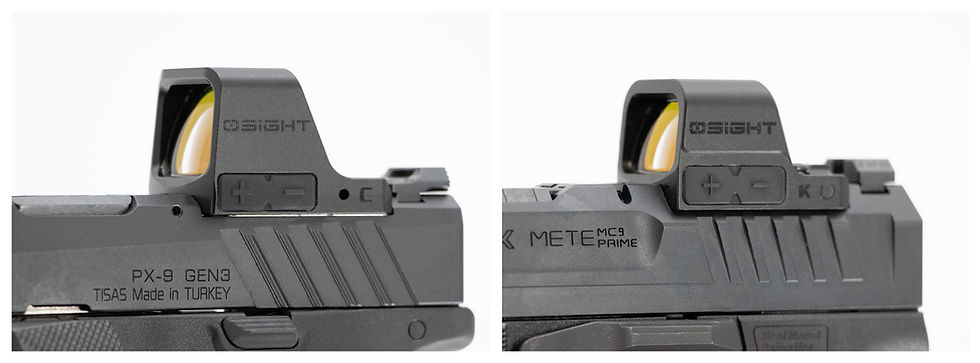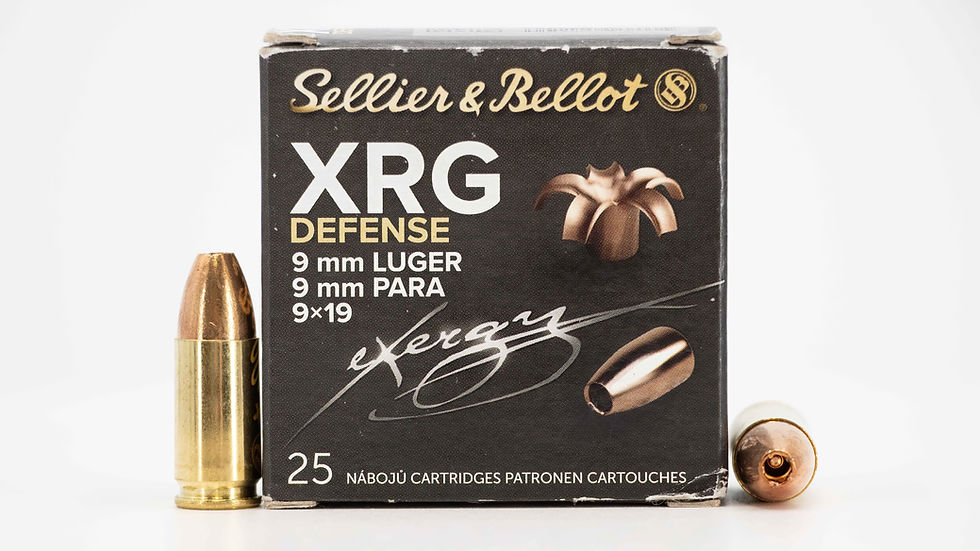A New Ammo Type?
- Graham Baates

- Jul 20, 2021
- 4 min read
Updated: Mar 8, 2024
*Some of the external links found on this website are affiliate links. Those links use cookies to generate revenue and fund continuation of this website. By clicking an external link you are consenting to a temporary cookie, by purchasing from that link you are supporting this website. To opt out of cookies do not click external links.
*This article contains links which serve only as references and are not affiliate links.
The What's For Dinner test's origins will make for another post, but one thing remains, we enjoy finding different ammunition and seeing how it works in different guns, how the recoil impulse differs, and have learned quite a bit of just how different something as ubiquitous as 9mm can be.
9mm, 9x19mm, 9mm Luger, 9mm, Parabellum, .380 Long (that's a joke) or whatever you want to call Georg Luger's invention has been around a long time and become the most popular handgun cartridge in the world. Adequate power levels for stopping two-legged threats can be created without pressures that wear out guns or shooters. Combine that with a overall cartridge size and weight that's not too burdensome to transport or store and it's easy to see why 9mm is everywhere. In the early days of the channel more than 65 different 9mm defensive loads were tested as I began to get a feel for just what the round can do (If you want to get deep and see some old videos check out the playlist here). Since then the What's For Dinner Test typically includes ten different loadings ranging in weight from 65gr up to 165gr including brass, steel, and aluminum cases. Running those tests hundreds of times has not only given us a good feel for advantages and disadvantages of different ammunition designs, but also for why they might exist and what they cost.
Cost is likely the main reason that steel-cased ammunition exists. It's a lot cheaper to produce which means lower cost to the shooter. The downfall of course is that steel rusts. Sure brass corrodes too, but it takes longer and more moisture than steel to get to the point that it's not shootable. Some manufacturers of steel-cased ammo try to protect the steel with lacquer or polymer. This works fine for the Russian military with guns designed to somewhat tolerate it, but in other guns running lots of that ammo results in the action getting gummed up. This means that for most of us steel-cased ammo is fine for plinking, but requires more care for long-term storage than regular brass-cased. You can save some money with steel-cased, but then have to be more careful with storage and exposure to the elements. Despite the range lore out there some of it is actually pretty good and so long as the gun's chamber and extraction is designed for steel-cased ammunition there are no problems running it in rifles (the AK47 for example was designed for steel-cased ammunition and extracts with so much force it can tear a brass case). Rifles however also deal with higher pressures and temperatures than pistols. This is where sensitivity for steel-cased ammo comes from and why it's not that big of a deal in pistols.
In pistols extraction force is generally a result of the slide's speed. That's right, sorry to burst everyone's bubbles about "weak ejection" from pistols, but for 99% of the common guns out there the ejector is merely a piece of metal the case gets rammed against while traveling rearward with the slide. Move the slide faster and you'll get "stronger" ejection, move it slower and you'll get "weaker" ejection. What does this have to do with case material? Friction. Brass is smooth, slick even, coat it in nickel and you get ammunition that glides in and out of the chamber. The nickel plating also protects the brass from corrosion which is why we see nickel-plated cases on self defense ammo which undoubtedly see more temperature and humidity cycles than range ammo.
ZQi Ammunition has begun importing a new type of ammunition that looks to split the difference. This ammo is steel-cased, but nickel-plated. The steel cases help keep cost down while the nickel plating provides corrosion resistance and extra lubricity for reliable feeding and extraction. It's an interesting concept. Yes nickel plating adds to cost, how much is hard to say. At the time this article was written ammunition prices in the US have been all over the place typically 4-6 times higher than they were in 2019. ZQi Ammunition lists the ammo on their site about on par with brass-cased found elsewhere. Where prices will be when the market settles down I can not pretend to predict. At the time this was written the price difference for ZQi nickel-plated steel over polished steel (another option we haven't tested yet) is only $0.02/round more when bought by the case.
Is the ammo any good? Take a look at our video and you'll see it compared to traditional steel-cased ammo. We'll also be running it in our What's For Dinner test until supplies deplete. So far it's proven to be an upgrade from traditional steel-cased ammo.









"we all try... like fools " https://www.youtube.com/watch?v=9G9y_Uv_hvg
The cartridge case took a very long time to develop. This was during a time that a steel case was impractical as it needed to be machined as the material technology of the case draw dies had not progressed; metallurgy of the metal was not up where a reliable case could be made of steel, and most importantly; steel has a much different and higher Young's Modulus of Elasticity actually making it unsuited for cartridge cases. Brass or copper were the materials used and the evolution of cartridge ammunition is closely tied to material. It is an intimate part of how and why the ammunition works successfully. Ammunition was developed by a slow evolutionary process of refinement, and brass being…